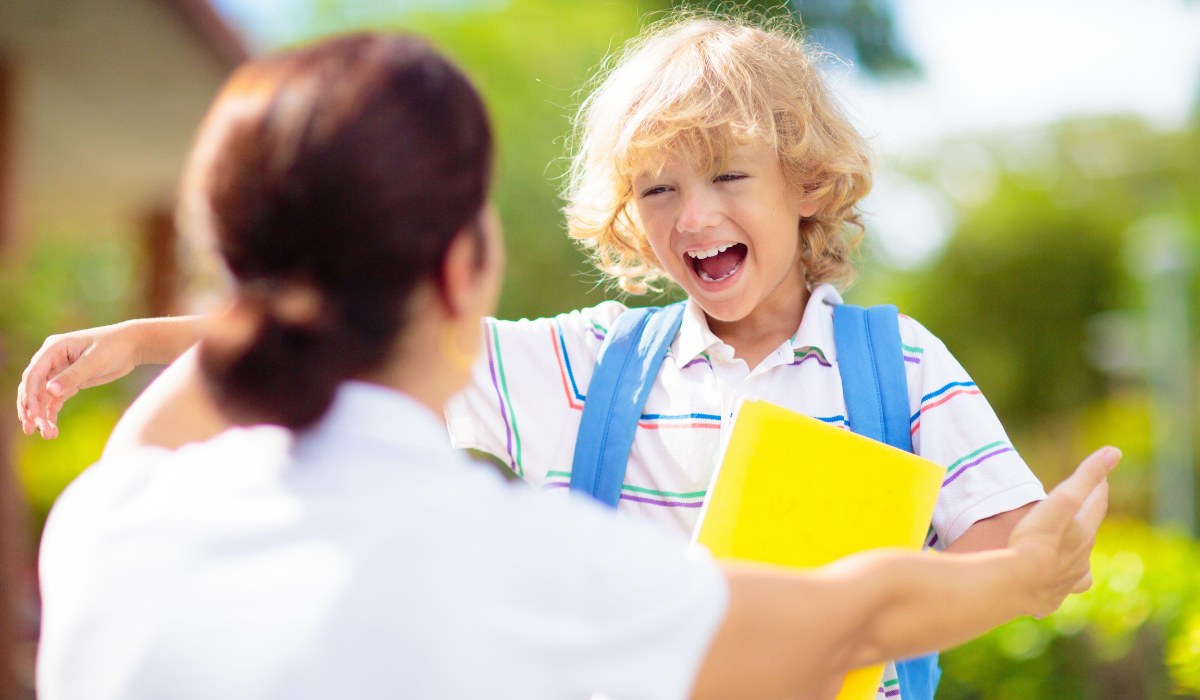ABA Therapy and Sibling Relationships
Building Bridges: How ABA Therapy Enhances Sibling Bonds in Autism Families


Understanding the Role of ABA in Family Dynamics
Autism Spectrum Disorder (ASD) presents unique challenges and opportunities within family environments, particularly in sibling relationships. Applied Behavior Analysis (ABA) has long been recognized as an effective therapeutic approach for children with autism, aiming to improve communication, social skills, and emotional regulation. But its influence extends beyond the individual to the entire family, shaping how siblings connect, support, and grow together. This article explores how ABA therapy can support sibling relationships, strategies for fostering positive interactions, and the resources available to families navigating these dynamics.
Supporting Communication and Social Skills through ABA

How does autism affect sibling relationships?
Autism can influence sibling relationships by adding emotional, social, and practical challenges, such as increased responsibilities, feelings of neglect, or frustration for allistic siblings. Family dynamics, including parental stress and routines, also play a significant role in shaping these relationships.
Siblings of autistic children may experience a wide spectrum of emotions, including guilt, embarrassment, or confusion, especially during childhood and adolescence. These feelings can sometimes create distance or misunderstandings.
However, positive qualities like empathy, loyalty, and teamwork often develop as siblings learn to support each other. With understanding, early intervention, and support from the family, many sibling relationships flourish despite the initial hurdles.
Reducing Conflict and Building Emotional Resilience

How can ABA therapy support sibling relationships in families with autism?
ABA therapy provides a structured framework to nurture positive sibling bonds within families affected by autism. One major aspect involves recognizing and responding to communication cues, including non-verbal signals, which helps siblings understand each other better. By imparting social skills like turn-taking, sharing, and perspective-taking, ABA encourages children to interact more positively and collaboratively.
Another crucial element involves behavior management. ABA techniques work to identify triggers for problematic behaviors such as aggression or meltdowns, enabling families to address these issues effectively. When siblings understand and participate in behavioral strategies, conflicts often decrease, leading to more peaceful interactions.
Furthermore, ABA emphasizes emotional regulation skills, helping children manage feelings like jealousy or frustration. As children learn to cope with their emotions, sibling interactions tend to become more supportive and less reactive.
Creating shared activities—such as collaborative games, creative projects, or outdoor adventures—are woven into ABA plans to foster bonding through positive shared experiences. Including siblings in therapy sessions can promote teamwork, improve social understanding, and validate their supportive role.
Educating siblings about autism reduces misconceptions and promotes empathy, making them more patient and accepting. This understanding paves the way for a respectful, inclusive family environment.
Integrating ABA principles into daily routines and family life can significantly strengthen family bonds. It encourages open communication, celebrates individual strengths, and teaches conflict resolution, all of which support emotional resilience among siblings.
Overall, ABA-based strategies are tailored to meet each child's unique needs. They motivate children and siblings to learn and play together, fostering a supportive atmosphere where emotional resilience and understanding can flourish.
Encouraging Active Sibling Involvement in Therapy

Participation of siblings in ABA sessions
Including siblings in ABA therapy sessions provides a unique opportunity to promote teamwork and understanding. Siblings can observe and learn the strategies used to improve communication, emotional regulation, and social skills in their brother or sister. When actively involved, they act as natural peer models, demonstrating appropriate behaviors and reinforcing positive interactions.
This participation can also help siblings develop empathy and better understand autism, fostering a more supportive family environment. By taking part in therapy routines, siblings gain insight into the challenges faced by their autistic sibling and learn ways to offer appropriate support.
Fostering teamwork and shared learning
Engaging siblings in activities like turn-taking, cooperative games, and shared goal-setting encourages teamwork and enhances their relationships. These activities not only support skill development but also create positive shared experiences that strengthen sibling bonds.
Families can organize regular sibling-focused activities aligned with therapy goals, such as outdoor adventures or creative projects. Incorporating ABA principles, these shared experiences become opportunities for natural social practice and emotional connection.
Benefits and challenges of sibling involvement
Involving siblings in ABA therapy offers many benefits, including increased empathy, improved communication, and a stronger sense of family unity. Siblings can serve as effective reinforcement agents and peer models, helping generalize skills learned in therapy.
However, there are challenges to consider. Siblings may sometimes feel overwhelmed or unsure how to support their brother or sister. Balancing attention, maintaining boundaries, and managing their own emotional responses are important for sustaining positive involvement.
Effective communication and family support are essential in addressing these challenges. Strategies such as family meetings, setting realistic expectations, and celebrating siblings' contributions can help maintain a healthy collaborative environment.
Resources and strategies
Educational resources about the impact of ABA therapy on sibling dynamics are widely available. They often emphasize enhancing social interactions, managing conflicts, and promoting mutual understanding. Incorporating these insights, families can design ongoing activities and supports that nurture positive sibling relationships.
In summary, actively involving siblings in ABA therapy promotes mutual growth, strengthens family bonds, and fosters a supportive environment for children with autism. Tailoring involvement to family needs ensures a balanced approach that benefits everyone involved.
Fostering Family Routines and Inclusive Activities

Reinforcing family routines through ABA
In autism families, establishing consistent routines is essential. ABA therapy helps reinforce daily behaviors, such as mealtime, bedtime, and household chores, creating a predictable environment that can reduce anxiety. When routines are stable, children, including siblings, know what to expect, leading to smoother interactions and stronger family bonds.
Shared play, outdoor activities, and collaborative projects
Engaging siblings in shared activities fosters connection and social skills development. Participating in collaborative games, outdoor adventures, or creative projects allows siblings to practice turn-taking, sharing, and perspective-taking in a natural setting. These shared experiences also promote positive memories and ease sibling rivalry.
Celebrating individuality and promoting inclusivity
Recognizing and celebrating each child's unique strengths and interests encourages acceptance and empathy among siblings. Inclusive activities that cater to each child’s preferences can help siblings appreciate diversity. Fostering a supportive environment where everyone feels valued boosts overall sibling harmony.
Siblings attending therapy sessions together
Siblings can attend ABA therapy sessions together, depending on their specific needs and family goals. This joint participation offers opportunities for learning, support, and modeling appropriate behaviors. Siblings serving as natural peer models during therapy can reinforce social skills and promote understanding.
Strategies for ongoing involvement
Maintaining sibling involvement over time requires intentional strategies like family meetings, celebrating achievements, and engaging in sibling-specific activities. These approaches support continuous inclusion, helping siblings feel involved and valued in the therapeutic process.
| Strategy | Description | Benefit |
|---|---|---|
| Family routines | Establishing predictable daily schedules | Reduces anxiety, strengthens bonds |
| Shared activities | Collaborative play, outdoor adventures, projects | Enhances social skills and bonding |
| Celebrating individuality | Recognizing unique strengths | Fosters acceptance and inclusivity |
| Sibling participation in therapy | Attending sessions together | Builds understanding and support |
| Ongoing involvement | Regular family meetings and activities | Maintains engagement and progress |
Providing Education and Support for Siblings of Children with Autism

How can I support siblings of children with autism within the context of ABA therapy?
Supporting siblings of children with autism through ABA therapy involves a combination of education, involvement, and emotional support. First, providing siblings with clear information about autism and ABA strategies helps build understanding and reduce confusion. This education enables siblings to see their brother or sister’s behaviors as part of the condition and encourages empathy.
Involving siblings in therapy routines, such as shared activities and play sessions, fosters teamwork and allows them to practice social skills in real-life situations. This participation not only strengthens their bond but also promotes mutual support and learning. For example, siblings can learn to recognize non-verbal cues or take turns during play, reinforcing positive interactions.
Creating opportunities for open communication is vital. Encouraging honest conversations about feelings and challenges helps siblings express their emotions and reduces resentment or frustration. Supporting emotional regulation can also be achieved by teaching siblings stress-management techniques and celebrating their individuality.
Family-centered ABA approaches advocate for special activities that promote emotional growth, such as outdoor adventures, creative projects, or collaborative games. These shared experiences help siblings feel involved, valued, and connected.
Additionally, offering emotional support through group sessions or counseling for siblings can address feelings of jealousy, guilt, or overwhelm. Educating siblings about autism not only fosters acceptance but also cultivates admiration and patience.
Involving siblings as natural peer models and reinforcement agents can further improve behaviors and social dynamics. When siblings understand their role as helpers and supporters, the overall family environment becomes more supportive of the child's progress.
To sum up, supporting siblings in ABA families requires a holistic approach that combines education, active participation, emotional care, and positive shared activities. These strategies help nurture healthy sibling relationships, promote social and emotional development, and create a supportive family atmosphere.
Understanding the Evolution of Sibling Relationships with ABA

How do sibling relationship dynamics change over time?
Sibling relationships in families with children undergoing ABA therapy often experience shifts as everyone grows and adapts. Initially, siblings may feel overwhelmed or uncertain about the child's behavior. As they become more familiar with autism spectrum disorder (ASD) and ABA strategies, their understanding deepens, fostering empathy and patience.
Over time, these relationships can evolve into stronger bonds rooted in shared experiences and mutual support. Children learn to celebrate each other's individuality and develop social skills through participation in therapy routines and shared activities. As siblings gain confidence and understanding, they can become natural peer models, reinforcing positive behaviors and supporting emotional regulation.
How can I adjust sibling involvement with changing family and developmental stages?
Family dynamics are always shifting, especially with children at different developmental stages. Siblings may need different levels of involvement and support over time. During early childhood, focusing on age-appropriate activities and setting clear routines helps maintain stability.
As children grow, involving siblings in more complex tasks—like helping with behavioral strategies or participating in therapy sessions—can foster teamwork and sharing of responsibilities. Regular family meetings or one-on-one time can help address individual needs, celebrate achievements, and keep sibling connections strong.
Adaptation is essential. Tailoring sibling participation to suit their developmental stage and emotional readiness ensures they feel valued and understood, promoting a balanced and healthy relationship.
How do I balance attention and boundaries to support healthy sibling relationships?
Maintaining a healthy balance between attention to the child with autism and other siblings is crucial. Over-involvement can lead to jealousy or feelings of neglect, while too little attention might cause frustration.
Structured routines that include dedicated time for each sibling ensure everyone feels valued. Creating fair household rules and involving siblings in setting boundaries help foster mutual respect. Teaching conflict resolution skills and promoting open communication also reduce misunderstandings.
Activities that include the whole family—like shared play, outdoor adventures, or collaborative projects—build positive interactions. Recognizing individual achievements and celebrating each child's unique qualities strengthen sibling bonds.
Effective management of attention and boundaries, with ongoing communication and flexibility, supports a nurturing environment where all siblings can thrive together.
Fostering a Holistic Approach to Sibling Relationships
Incorporating ABA therapy into family dynamics offers a powerful avenue for strengthening sibling bonds. By focusing on communication, emotional regulation, shared activities, and education, families can create a supportive, inclusive environment where all children thrive. Ongoing support and open dialogue are essential to navigate the evolving nature of sibling relationships, ensuring that each child feels valued, understood, and connected. Through intentional strategies and resources, ABA can serve as a foundation for enduring, positive sibling relationships that enrich family life.
References
- Supporting Sibling Relationships in Autism Families Using ABA
- Help Siblings of Children with Autism Thrive - Strive ABA Consultants
- ABA Therapy Near me: Supporting Siblings in Treatment
- Autism & Sibling Relationships - Surpass Behavioral Health
- Help Siblings of Children with Autism Thrive - Strive ABA Consultants
- Sibling Involvement in Axis ABA Plans
- The Impact of ABA on Families | Prospera Healthcare
Apply Now
At Grateful Care ABA, we are proud to offer the best ABA therapy services in Indiana. Armed with a team of skilled Board Certified Behavior Analysts (BCBAs), we bring years of experience to the table, making us the preferred provider for ABA therapy in our community.
Understanding that every child with ASD is unique and has unique goals and objectives, our ABA therapists carefully craft personalized ABA therapy plans that are tailored to meet the specific needs of each child. Whether your child needs help with reducing maladaptive behaviors, your child needs IEP support at school, you want your child to be self-sufficient at home, or something else, we use ABA therapy to work diligently toward specific goals. Together we can make a difference in your child’s life!
Contact us today to connect with an ABA therapist and learn more about ABA therapy solutions for your child.

.jpg)
.jpg)





.jpg)
.jpg)
.jpg)

.jpg)
.jpg)
.jpg)
.jpg)
.jpg)
.jpg)
.jpg)

















































































